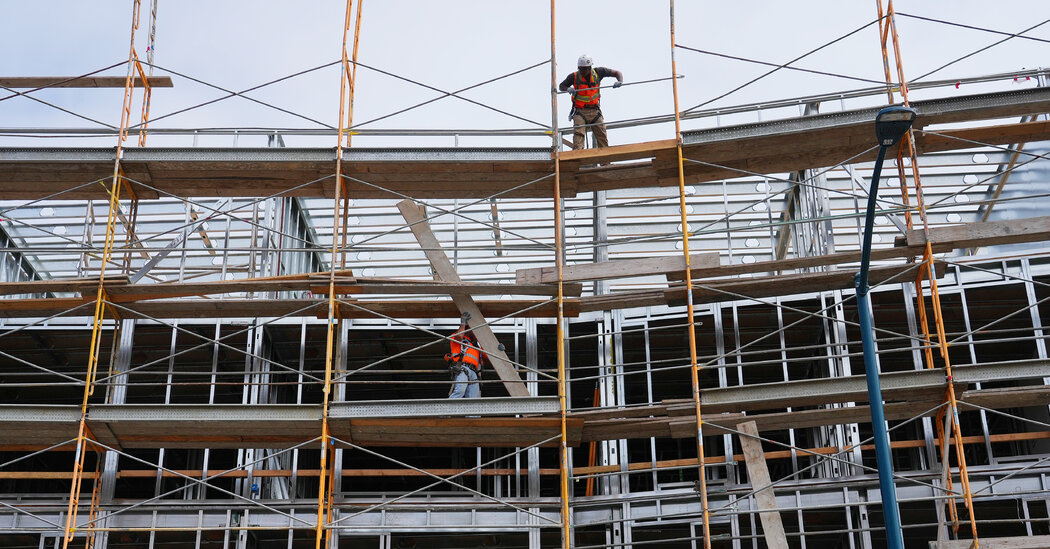Federal Reserve policymakers are keenly focused on the strength of the labor market as they debate how much further cooling of the economy is needed to bring rapid inflation back to a normal pace. New labor market data released on Friday likely did little to dissuade them from raising interest rates at their meeting later this month.
The June data is the last salary report officials will receive before the July 25-26 central bank meeting. It underlined many of the labor market themes that have been present for months: while job growth is gradually slowing, wage growth remains abnormally fast and the unemployment rate is very low at 3.6 percent.
Investors widely expected the Fed to raise rates at their July meeting, ahead of the report, and the June data confirmed that prediction. Many are paying particular attention to wage data: average hourly wages rose 4.4 percent in the year to June, versus an expectation of 4.2 percent, and wage increases for May were revised upwards. After months of slowdown, those earnings numbers have remained more or less stable since March.
“Overall, it’s strong enough for the Fed to think they still have some work to do,” said Michael Gapen, chief U.S. economist at Bank of America, explaining that the report showed signs of early weakness as well as signs of recovery. sustained power. “Hiring is cool, but the job market is still hot.”
Fed officials are closely watching wage data, fearing that if wage growth remains unusually fast, it could become difficult to fully bring high inflation back to their target of 2 percent. The logic? When companies better compensate their workers, they can also increase their prices to cover their higher wage costs. At the same time, families who earn more will be better able to afford higher prices.
Fed officials are surprised by the endurance of the economy after 16 months of trying to slow it down by raising interest rates, which make borrowing more expensive and are designed to cool consumer and business demand. Growth is slowing, but the housing market is starting to stabilize and the labor market has remained abnormally strong with plenty of opportunities and at least some bargaining power for many workers.
That resilience — and the stubbornness of rapid inflation, particularly for services — is why policymakers expect to keep raising interest rates, which they have already lifted above 5 percent for the first time in about 15 years. Officials have raised rates in smaller increments this year than last year, skipping a rate change for the first time in 11 meetings at their meeting in June. But several policymakers have made it clear that even if the pace slows, they still expect interest rates to rise further.
“It may make sense to skip a meeting and go more gradually,” Lorie K. Logan, the president of the Federal Reserve Bank of Dallas, said during a speech this week, noting that it is important for officials to follow up by continuing to raise rates.
She added that “inflation and the labor market moving more or less as expected will not really change the outlook.”
Fed officials predicted in June that they would hike rates twice more this year — assuming they change in quarter-point increments — and that the labor market would weaken, but only slightly. They saw the unemployment rate climb to 4.1 percent by the end of the year.
Policymakers won’t release new economic projections until September, but Wall Street will monitor how policymakers react to economic developments to gauge whether another move is likely this year.
“Job growth has slowed, but remains too strong to warrant an extended Fed pause,” said Seema Shah, chief strategist at Principal Asset Management, explaining that the new data gave the Fed “little reason” to make a increase in July. The question is what happens next.
For now, investors see another rate hike after July as possible but not guaranteed, and the June jobs report did little to change that.
The yield on the two-year government bond, which is sensitive to changes in investor expectations for future interest rates, fell from over 5 percent to about 4.9 percent. The move, in part, reflected investors’ relief that the jobs data this week had not followed a string of other data points that beat expectations.
Some on Wall Street expect the economy to weaken more in the coming months, which could prompt the Fed to postpone future rate moves. It often takes months or years for higher borrowing costs to have their full economic effect, so more delays could already be in the pipeline.
This month, one of Wall Street’s much-watched recession indicators, which compares short-term and long-term government bond yields, sent the strongest signal since the early 1980s that a recession is on its way.
But Fed officials aren’t so sure. Austan Goolsbee, president of the Federal Reserve Bank of Chicago, said on CNBC Friday that reducing inflation without a recession would be a “triumph.”
“That’s the golden path – and I feel like we’re on that golden path,” said Mr. Goolsbee.

